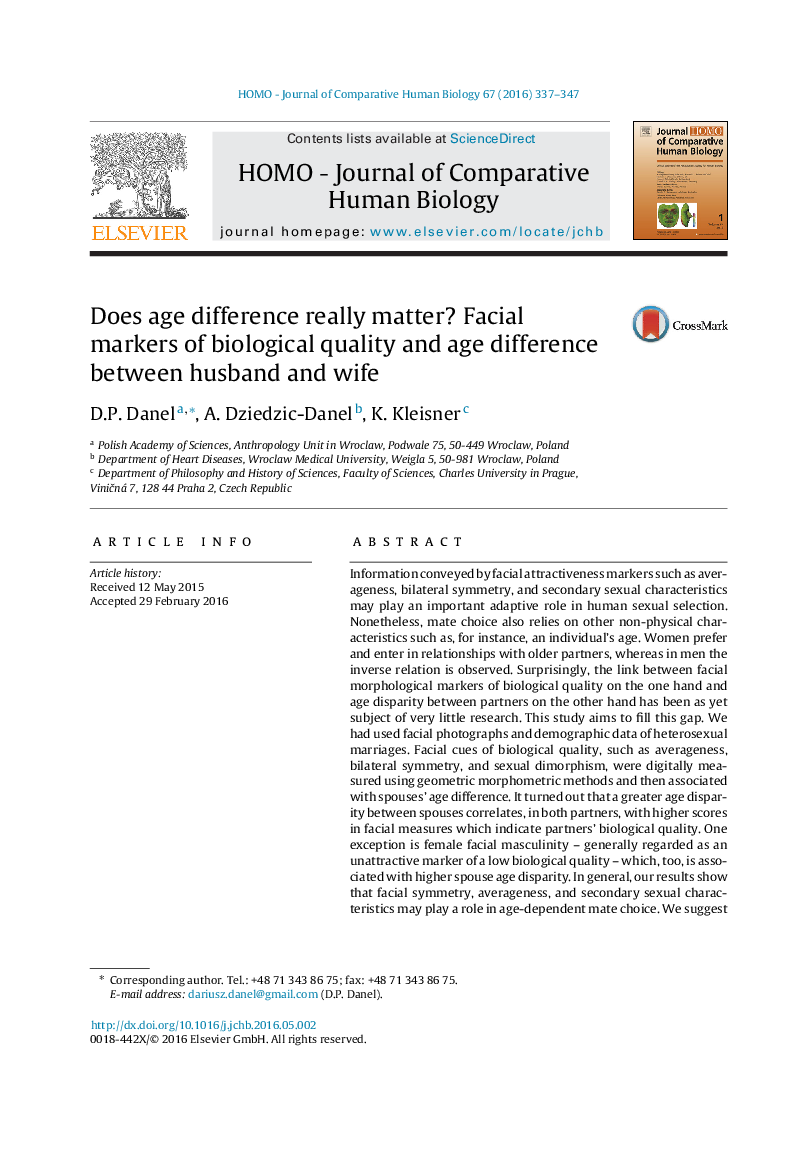| کد مقاله | کد نشریه | سال انتشار | مقاله انگلیسی | نسخه تمام متن |
|---|---|---|---|---|
| 100018 | 160956 | 2016 | 11 صفحه PDF | دانلود رایگان |
Information conveyed by facial attractiveness markers such as averageness, bilateral symmetry, and secondary sexual characteristics may play an important adaptive role in human sexual selection. Nonetheless, mate choice also relies on other non-physical characteristics such as, for instance, an individual's age. Women prefer and enter in relationships with older partners, whereas in men the inverse relation is observed. Surprisingly, the link between facial morphological markers of biological quality on the one hand and age disparity between partners on the other hand has been as yet subject of very little research. This study aims to fill this gap. We had used facial photographs and demographic data of heterosexual marriages. Facial cues of biological quality, such as averageness, bilateral symmetry, and sexual dimorphism, were digitally measured using geometric morphometric methods and then associated with spouses’ age difference. It turned out that a greater age disparity between spouses correlates, in both partners, with higher scores in facial measures which indicate partners’ biological quality. One exception is female facial masculinity – generally regarded as an unattractive marker of a low biological quality – which, too, is associated with higher spouse age disparity. In general, our results show that facial symmetry, averageness, and secondary sexual characteristics may play a role in age-dependent mate choice. We suggest that in marriages where the wife is considerably younger than the husband, wife's greater facial masculinity may increase her perceived age and with it, her perceived maturity.
Journal: HOMO - Journal of Comparative Human Biology - Volume 67, Issue 4, August 2016, Pages 337–347
